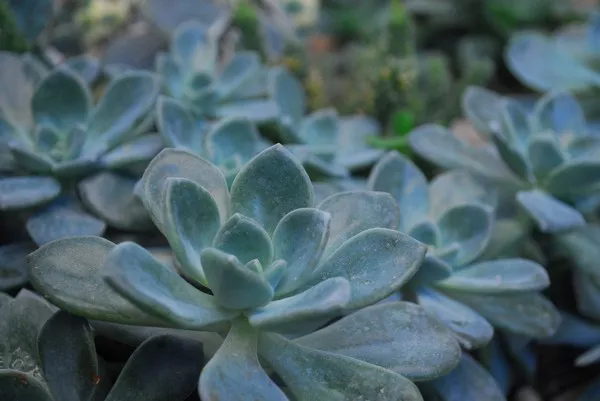Succulent plants, with their captivating forms and remarkable resilience, have become a popular choice for both seasoned gardeners and beginners alike. Among the various methods of succulent propagation, potting cuttings stands out as an effective and rewarding technique. This article provides an in-depth exploration of potting succulent cuttings, encompassing essential steps and optimal conditions that contribute to successful propagation.
Understanding Succulent Cuttings
Potting succulent cuttings is a propagation method that involves taking a healthy portion of a mature succulent and nurturing it into a new plant. This process harnesses the plant’s innate ability to generate roots from a cut stem or leaf. By following the right steps and providing suitable care, you can turn a single cutting into a thriving succulent specimen.
1. Selecting the Right Cuttings
Choose succulent cuttings that exhibit robust growth, plump leaves, and show no signs of damage or disease. Ideal cuttings are typically taken from healthy, established plants.
2. Leaf Cuttings vs. Stem Cuttings
Succulent cuttings can be broadly categorized into two types: leaf cuttings and stem cuttings.
Leaf Cuttings: For succulents with fleshy leaves, such as echeverias and sedums, carefully remove a healthy leaf from the parent plant. Let the leaf dry and callus for a day or two before potting.
Stem Cuttings: For succulents with thicker stems, like jade plants and crassulas, snip a section of stem that is at least a few inches long. Allow the cut end to air dry before planting.
Potting Succulent Cuttings: Step-by-Step Guide
1. Gather Your Supplies
Before you begin potting, gather the necessary materials:
Container: Select a pot or container with drainage holes to prevent waterlogged soil.
Potting Mix: Use a well-draining succulent or cactus potting mix, or create your own blend using a combination of regular potting soil, perlite, and coarse sand.
Cuttings: Prepare the succulent cuttings you’ll be potting.
2. Preparing the Cuttings
For leaf cuttings, allow the severed ends to callus over for a day or two. This reduces the risk of rot when they come into contact with the potting mix. Stem cuttings should also be left to air dry, which promotes the formation of a protective callus.
3. Potting the Cuttings
Fill the Container: Add the well-draining potting mix to the container, leaving enough space for the cuttings.
Insert the Cuttings: Gently insert the callused end of the leaf cutting or the dried stem cutting into the potting mix. For stem cuttings, plant them deep enough to ensure stability.
Positioning: If you’re potting multiple cuttings, ensure they are spaced appropriately to allow room for growth.
4. Initial Watering
After potting, water the cuttings lightly. Ensure that water reaches the potting mix but doesn’t saturate it. Mist the soil lightly to provide humidity, which aids in root development.
5. Providing the Right Environment
Place the potted cuttings in a location that receives bright, indirect sunlight. Avoid exposing them to direct sun, as this can lead to sunburn.
Optimal Conditions for Potting Succulent Cuttings
Creating an environment conducive to root development and growth is vital for the success of potted succulent cuttings. Consider the following factors:
1. Light
Provide bright, indirect sunlight to your potted cuttings. As they establish roots and begin growing, you can gradually acclimate them to more direct sunlight.
2. Temperature
Maintain a temperature range of 65-75°F (18-24°C) for optimal growth. Avoid exposing the cuttings to extreme temperatures, which can impede root development.
3. Soil
Choose a well-draining potting mix that allows excess water to escape and prevents root rot. A mix formulated for succulents or cacti is preferable.
4. Watering
During the initial stages of propagation, water sparingly. Allow the potting mix to dry out between waterings to prevent overhydration.
5. Humidity
While succulents appreciate low humidity, misting the cuttings or covering them with a clear plastic dome can help maintain a slightly humid microenvironment that supports root growth.
Nurturing Your Newly Potted Cuttings
Once you’ve potted your succulent cuttings, ongoing care is essential for their long-term health and development. Here are key topics to consider:
1. Watering Routine
As the cuttings establish roots and begin to grow, adjust your watering routine. Water moderately, allowing the potting mix to dry out between waterings.
2. Gradual Acclimatization
When the cuttings have developed roots and show signs of growth, gradually expose them to more sunlight. This process helps prevent sunburn and allows the plants to adapt to their new environment.
3. Potting Up
As the cuttings grow and fill out their containers, consider repotting them into slightly larger pots. This provides them with more space for root expansion and growth.
4. Fertilization
After a few weeks of growth, you can start feeding your potted succulent cuttings with a diluted, balanced liquid fertilizer. Apply the fertilizer sparingly, following the manufacturer’s recommendations.
5. Pests and Diseases
Monitor your cuttings for signs of pests, such as mealybugs and aphids, as well as any signs of disease. Promptly address any issues to prevent them from spreading.
Conclusion
Potting succulent cuttings is a fascinating journey that allows you to witness the magic of growth and transformation. By carefully selecting and potting cuttings, providing the right environment, and tending to their needs, you can nurture these young plants into mature and thriving succulents. As you embark on this propagation adventure, remember that patience, observation, and a willingness to adapt your care routine will contribute to your success. With each potting, you contribute to the legacy of these resilient and captivating plants, enjoying the beauty they bring to your space for years to come.


